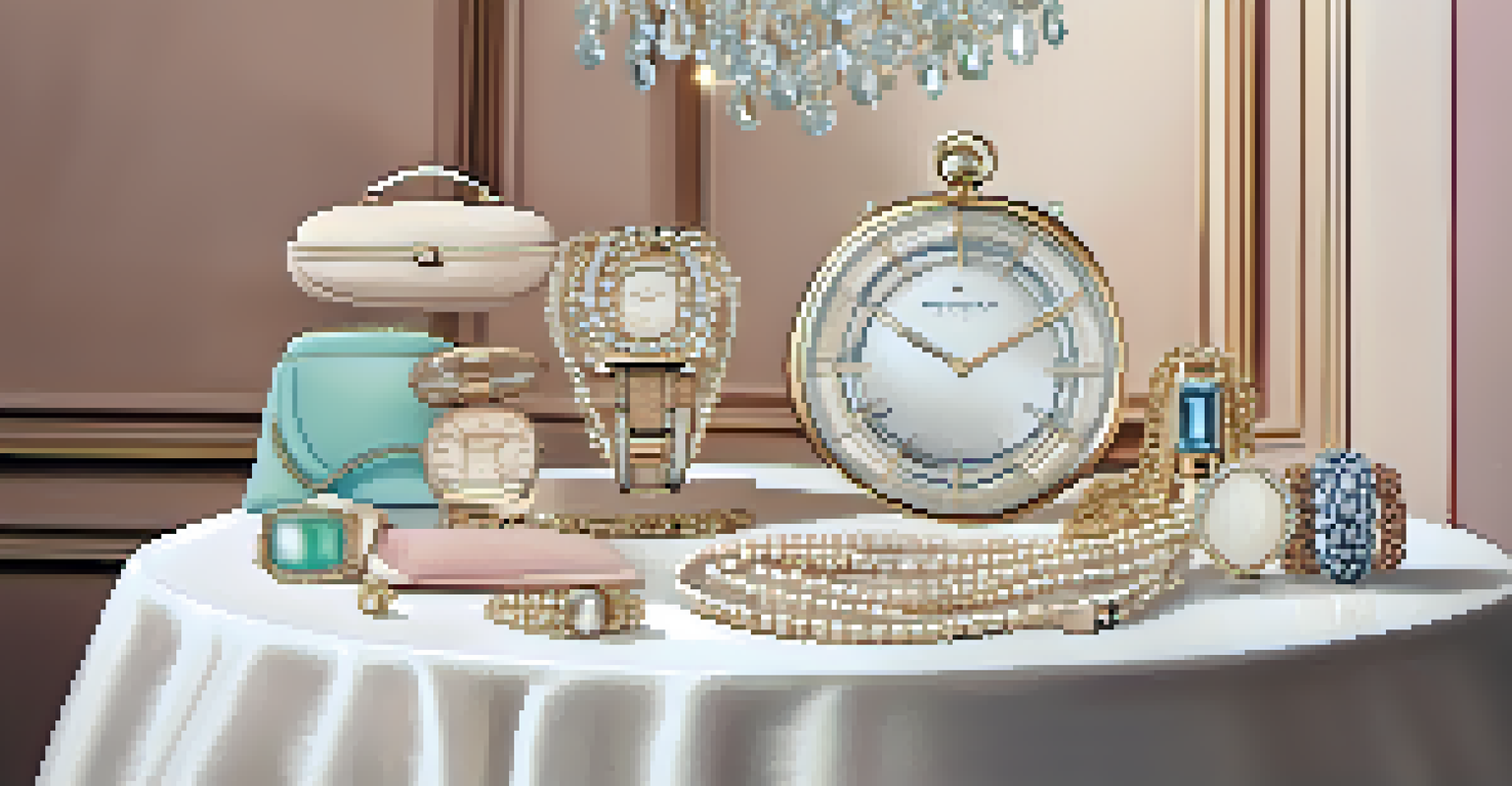Fashion and Personal Branding: The Power of First Impressions

Understanding the Basics of Personal Branding
Personal branding is the practice of marketing yourself and your career as a brand. It involves showcasing your unique skills, values, and personality to create a memorable image. Just like a company brand, your personal brand influences how others perceive you in both personal and professional contexts.
Your brand is a story unfolding across all customer touch points.
At its core, personal branding is about authenticity. It’s essential to align your brand with who you truly are rather than trying to fit into someone else's mold. This authenticity resonates with others and builds trust, which is crucial for making strong connections.
Fashion plays a vital role in personal branding. The way you dress can reflect your personality and values, helping to communicate your brand message without saying a word. Choosing outfits that resonate with your identity can enhance your overall impact and presence.
The Impact of First Impressions in Fashion
First impressions are formed within seconds, and your fashion choices are a significant part of that initial perception. Research suggests that people often make judgments about others based on their appearance in just a few moments. This quick assessment can influence opportunities in both social and professional situations.

Consider how a well-tailored suit can convey professionalism or how a casual outfit might suggest approachability. Understanding these nuances allows you to dress strategically for different contexts, ensuring you present the right image at the right time.
Authenticity Builds Trust
Personal branding relies on being true to yourself, as authenticity fosters trust and strong connections.
It's not just about looking good; it's about feeling confident in your choices. When you feel good in your clothing, that confidence radiates, further enhancing the positive impression you create. This self-assurance becomes part of your personal brand narrative.
Choosing the Right Style for Your Brand
Choosing a fashion style that aligns with your personal brand is crucial. Whether you prefer classic, edgy, or bohemian styles, ensure it reflects your personality and values. This authenticity will help create a cohesive brand image.
Fashion is the armor to survive the reality of everyday life.
For example, if you work in a creative field, adopting a more eclectic style can showcase your innovative spirit. Conversely, in a corporate environment, a polished and professional wardrobe may be more appropriate. Understanding your industry and audience helps guide your fashion choices.
Don’t be afraid to experiment! Finding your unique style is a journey, and it often involves trial and error. Embrace what feels right for you, and remember that personal branding through fashion is an ongoing process.
Fashion as a Tool for Storytelling
Fashion is a powerful storytelling tool that helps convey your journey and experiences. Each piece of clothing can represent a chapter of your life, allowing you to share who you are without saying a word. For instance, the vintage dress you wear might tell a story of nostalgia and creativity.
Using fashion to express your narrative can also create connections with others who share similar stories or values. This shared understanding can lead to deeper relationships, both personally and professionally. Think of your wardrobe as a canvas for your life’s experiences.
Fashion Influences First Impressions
Your clothing choices significantly shape first impressions, impacting opportunities in both social and professional settings.
Moreover, the way you style your outfits can also communicate specific messages. Accessories, colors, and patterns can evoke certain feelings or associations, enhancing the story you wish to tell. Being intentional about these choices can strengthen your personal brand.
The Role of Color Psychology in Fashion Choices
Colors have a significant impact on how we perceive ourselves and others. Different colors can evoke various emotions and convey different messages. For example, wearing blue may project calmness and trustworthiness, while red can convey passion and energy.
Understanding color psychology can help you make more strategic fashion choices that align with your personal brand. If you aim to be seen as a leader, incorporating bold colors might enhance that perception. Conversely, softer shades could be more appropriate for a nurturing or supportive brand.
Remember that cultural differences can also influence color meanings. What signifies positivity in one culture might have a different connotation in another. Being mindful of these subtleties can ensure your fashion choices resonate positively with your audience.
Accessorizing: The Finishing Touch for Your Brand
Accessories are the icing on the cake when it comes to fashion and personal branding. They can elevate an outfit and provide insight into your personality. A statement necklace, for example, can showcase creativity, while a classic watch may communicate professionalism.
Choosing the right accessories allows you to express different facets of your brand. You might opt for bold pieces in creative settings while keeping it understated in formal environments. This versatility can enhance your personal brand without compromising your identity.
Color and Accessories Matter
Strategic use of colors and accessories enhances your personal brand by conveying specific messages and showcasing your personality.
Additionally, accessories can serve practical purposes, too. A well-chosen bag can be both stylish and functional, making it a great representation of your brand’s lifestyle. Finding that balance between aesthetics and utility is key to effective accessorizing.
Maintaining Consistency in Fashion and Branding
Consistency is vital in personal branding. Just like a company maintains its brand image across various platforms, you should aim for coherence in your fashion choices. This consistency helps reinforce your identity and makes you more recognizable to others.
Consider creating a signature style that reflects your brand values. This could be a specific color palette, a type of accessory you frequently wear, or even a particular cut of clothing. Such elements become part of your brand’s visual language.

However, it’s essential to adapt your style to different contexts while maintaining your core identity. Flexibility shows that you are attuned to your audience and can adapt your fashion choices without losing your personal touch.